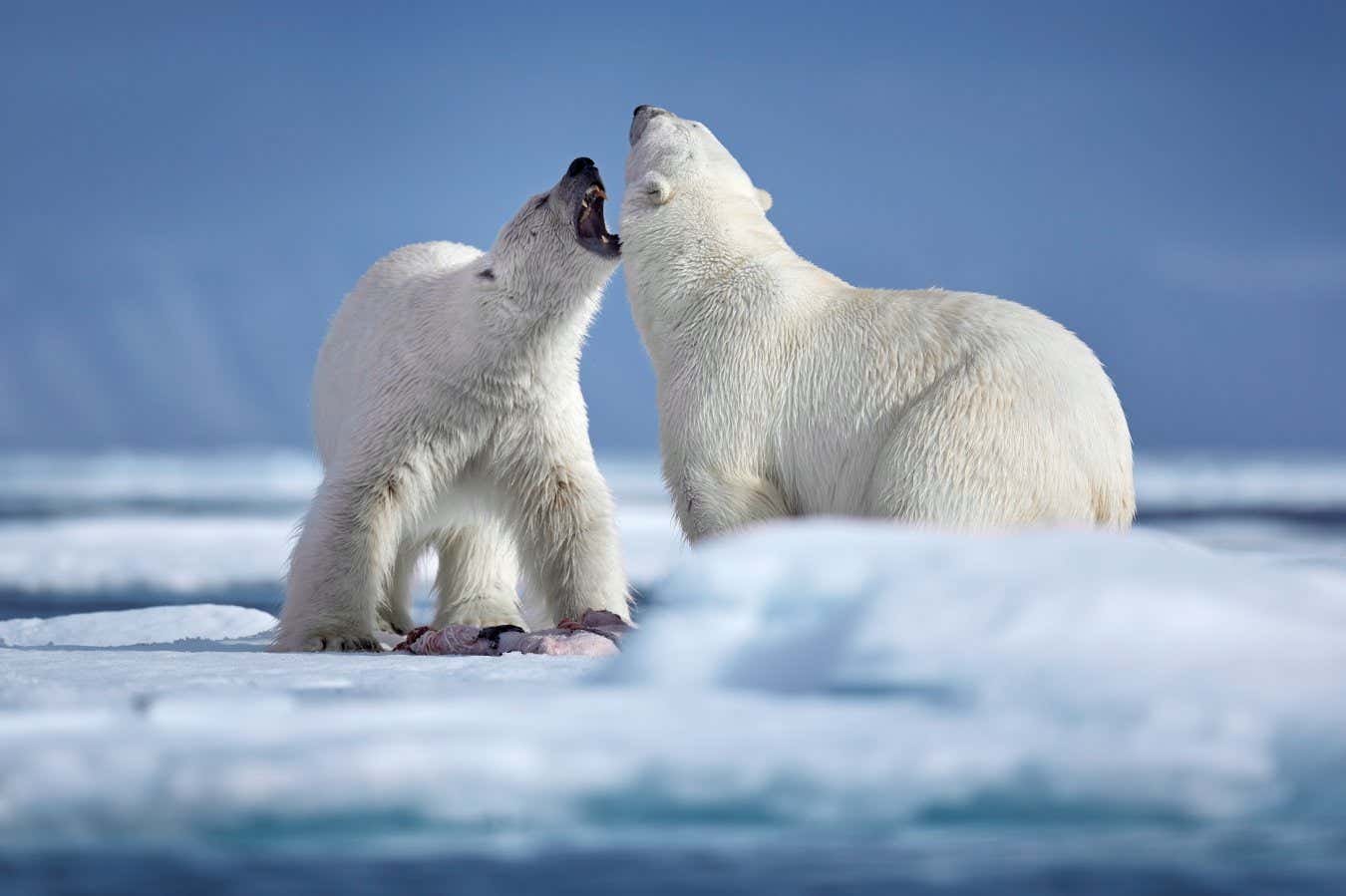Indigenous peoples of the Arctic traditionally use polar bear fur for its ice-resistant properties, but the science behind the bears’ natural antifreeze hasn’t been studied until now
By Michael Le Page
29 January 2025
Ice crystals can’t stick to polar bear fur
Ondrej Prosicky/Shutterstock
Polar bears have a hidden-in-a-plain-sight superpower that anyone who has watched a wildlife documentary could have spotted: ice doesn’t stick to their fur.
This has long been known to Indigenous peoples of the Arctic, who have utilised this property of the fur, but only now has it been noticed and studied by scientists. Bodil Holst at the University of Bergen in Norway and her colleagues have shown that the ice resistance of polar bear fur is due to natural oils secreted onto the hairs, rather than a property of the fur itself.
Read more
Plan to refreeze Arctic sea ice shows promise in first tests
Advertisement
Holst is a physicist who studies the properties of surfaces. Her interest in polar bear fur began when, while watching a TV quiz programme, she saw that the bears barely show up on infrared cameras because they are so well insulated. That means the temperature of their outer fur is below freezing, Holst realised, but she had never seen a polar bear in wildlife films that was coated with ice, even after swimming in sub-zero waters.
“And then I thought, well, how come freezing is not a problem? How come you don’t get accumulation of ice on the fur under these circumstances?” she says.
This is, after all, a problem for many other land mammals in cold environments, from musk ox to bearded polar explorers. Holst asked researchers at the Norwegian Polar Institute if they knew why polar bear fur doesn’t ice up. None did, but they decided to investigate together.
